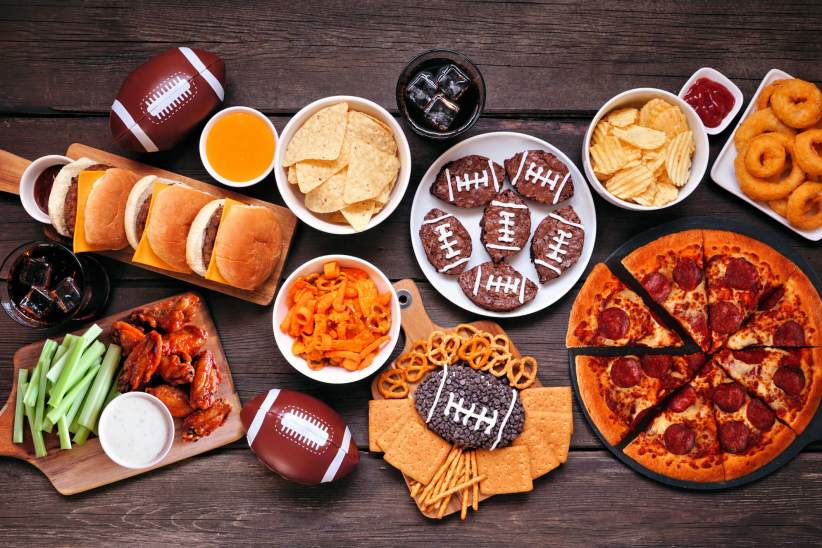Thank You Notes – They’re Still Important!
Kids love most everything involved with presents! Writing thank you notes for them? Not so much. While it may not be high on the fun list, acknowledging generosity is one of the earliest social skills learned and a discipline with lifelong benefits. Cindy Post Senning, Ed.D., director of The Emily Post Institute, offers these ideas to make the practice less arduous and more routine for your child:
• Write your own notes. It’s not merely about modeling the behavior for your child. It’s about embodying it. Make it your own priority and it will become an accepted habit.
• Engage children with age-appropriate ways to say “thank you.” When she’s 2, take a picture of her with the present to send with a quick note from you. When he’s 3 or 4, have him attach a sticker and color the note with his favorite crayon. As she gets older, she can sign her name, and, at 6-7, he can write his own note.
• Teach the child to keep notes short. It’s merely an appreciation for something specific use no more than three sentences. The opening line should be the thanks for the gift. The second can mention something positive about it – how much you love the color or how the money is going for a new bike. Close with a general sentiment about looking forward to seeing the gift-giver soon.
• If it’s post-holiday, have everyone writing at the table together. If it’s a solo venture, sit down with your child and pay your bills. It’ll feel like a joint activity – not a punishment or chore – and you’ll be there to help when she can’t find the right words.
• If your child delays or avoids writing notes, appeal to his reason. Ask him what it’s like when he does something nice for a friend and doesn’t hear “thank you.” He can understand that it feels bad and can realize how good it feels to be recognized. That context can provide the necessary motivation.
– Steve Calechman
Beautiful Bedtime Story
Kuu-kuu is the call that an African mother makes to her child, telling him that it is time to climb into the beautiful patterned leso, or cloth, a mother uses to carry her child on her back. Goodnight Kuu~Kuu: My Cozy All Day Village Safari (written by Wamoro P. Njenga, illustrated by Anne Sibley O’Brien, Prop-Abilities, Inc. 2010) is the story of one boy’s journey with his mother as he experiences the sights and sounds of a typical day in Africa. Together, they venture past giraffes and spiders to a farm and gather water. The baby delights in experiencing the world and learns how his mother handles herself safely. His mother knows he must experience these things early in life or he will grow up afraid of them. By experiencing new adventures wrapped close to his mother, he feels completely safe. The rhythm of the mother’s steps and the closeness he feels to her eventually soothe baby to sleep after an exciting trip through the village.
This book describes the universal feeling of warmth and security that a mother and baby share. It illustrates that children need to experience the world, while still feeling safe in their caregiver’s arms. In an effort to protect this feeling for children worldwide, a portion of the proceeds from the sale of this book are donated to various causes dedicated to helping children.
– Sarah Niss
Sun Exposure: New Warnings
Years of expert advice on the dangers of too much sun don’t appear to be sinking in, so the nation’s pediatricians have come out with a new, stronger policy statement on the issue.
Advice in the new policy statement – Ultraviolet Radiation: A Hazard to Children and Adolescents – from the American Academy of Pediatrics (AAP), includes:
• Do not burn; avoid sun tanning and tanning beds. The AAP is supporting a proposed ban on the use of tanning beds by teens. The Food and Drug Administration has been asked to approve a ban preventing people under age 18 from using tanning beds, or to at least require the consent of parents. Even tanning once in a while can increase skin cancer risk by 75 percent, researchers say.
• Wear protective clothing and hats. Tightly woven, dark-colored fabrics protect better than loose weaves in lighter shades. An ultraviolet protection factor (UPF) rates fabric protection as “good” (15 to 24), “very good” (25 to 39) or “excellent” (40 to 50). Learn more about this at www.skincancer.org/sun-protective-clothing.html.
• Seek shade. But realize that even shade doesn’t offer total protection. A fair-skinned person sitting under a tree can burn in less than an hour.
• Use extra caution near water, snow and sand. These reflect the sun’s rays and increase UV exposure.
• Apply sunscreen. This means a full ounce of a formulation with an SPF of at least 15, reapplied every two hours and every time you swim, sweat or towel off.
• Wear sunglasses. These don’t have to be pricey; they just have to offer the best UV protection you can find.
Cautionary Notes
The AAP report raises a few ongoing issues causing some controversy. First is the potential of oxybenzone, a common
sunscreen ingredient, to have what the report calls “estrogenic (mimicking estrogen) and other systemic effects.” Oxybenzone is absorbed through the skin, has been detected in urine and in breast milk, and researchers have called for more study into its impact on the body’s systems.
Second is the body’s essential need for vitamin D. Sun exposure is a good source of vitamin D, and there have been calls for “sensible sun exposure” of the arms and legs for 5-30 minutes daily to fend off deficiency. But dermatologists contend that even that kind of exposure is too risky.
In the absence of studies showing just how much sun exposure kids need to keep their vitamin D levels high enough, the AAP recommends they take 400 IU of vitamin D per day.
The report urges doctors to give sun protection advice “in the
context of promoting outdoor physical activity.” In other words, go outside to play. But try to stay in the shade and wear protective clothing, a hat and sunglasses. And reapply sunscreen every two hours.
– Christina Elston
Yummy Sliders From Whole Foods Market
The secret to the “perfect” burger isn’t in the seasoning; it’s in the beef! The best beef makes the best burgers! Makes 8
1 1/2 to 2 pounds ground round
Salt and pepper to taste
Eight small buns
Extra virgin olive oil
Four leaves romaine or green leaf lettuce
One large tomato, sliced
1/4 small red onion, thinly sliced
Ingredients
Directions:
1. Preheat the grill.
2. Divide and gently shape the meat into eight small
patties.
3. Season liberally with salt and pepper.
4. Grill meat to desired doneness, about four minutes per side over a medium hot fire.
5. If you’re a cheeseburger fan, add the cheese as soon as you flip to the second side.
6. Meanwhile, brush buns with olive oil and grill just until lightly toasted.
7. Dress burgers with lettuce, tomatoes and onions and serve.
Nutrition:
Per serving (1 burger/about 6oz/176g-wt.): 360 calories (170 from fat), 19g total fat, 7g saturated fat, 70mg
cholesterol, 440mg sodium, 24g total carbohydrate
(1g dietary fiber, 3g sugar), 23g protein.
Whole Foods Markets are located in White Plains at 100 Bloomingdale Road and in Connecticut at 150 Ledge Road in Darien and 90 E. Putnam Ave. in Greenwich.












